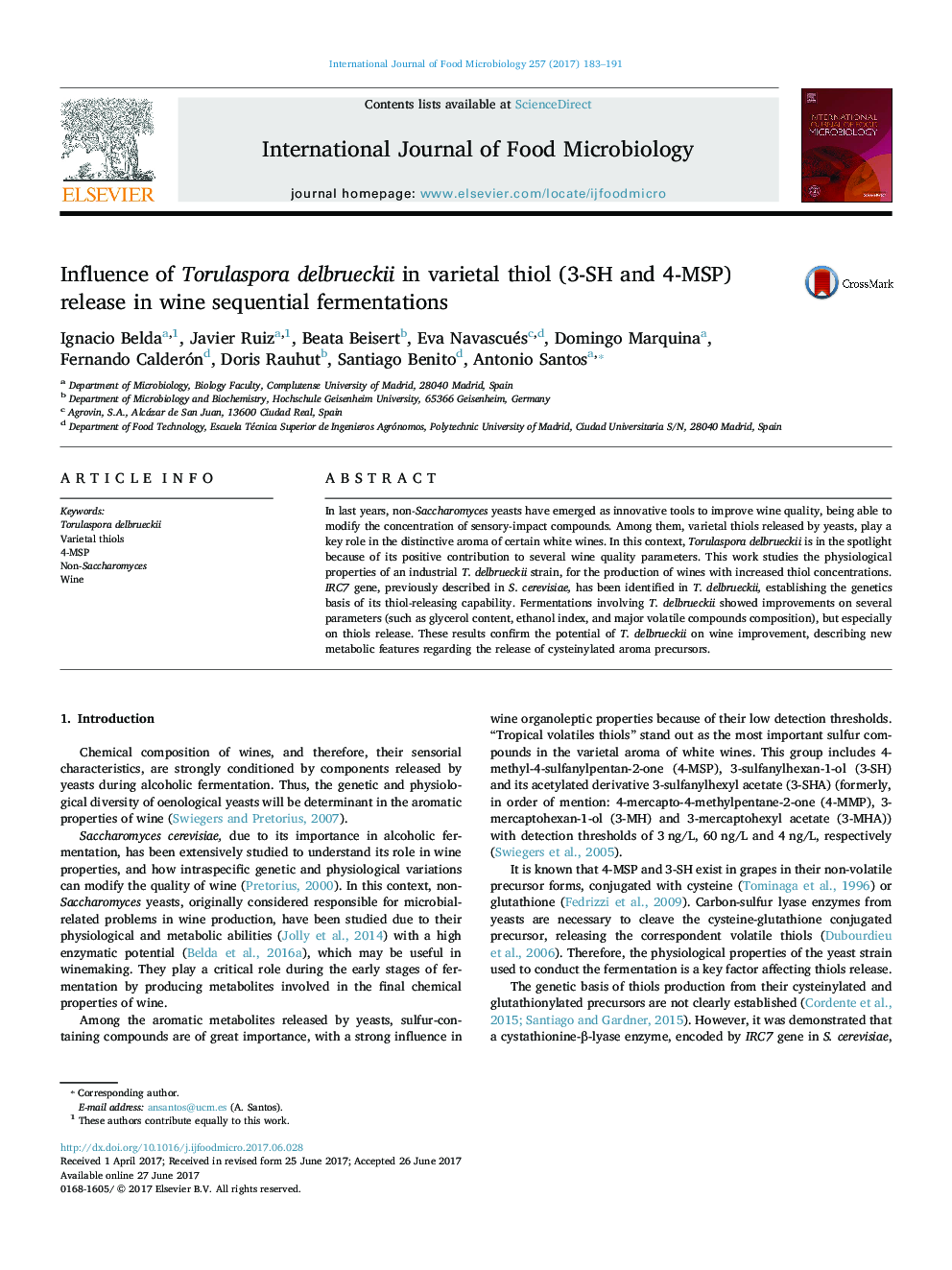| Article ID | Journal | Published Year | Pages | File Type |
|---|---|---|---|---|
| 5740668 | International Journal of Food Microbiology | 2017 | 9 Pages |
â¢T. delbrueckii enhanced tropical aroma profile releasing volatile thiols (3SH & 4MSP).â¢T. delbrueckii has an IRC7 gene homologous to the high-active allele in S. cerevisiae.â¢The use of T. delbrueckii NS-TD reduced the ethanol and acetic acid content of wines.â¢T. delbrueckii NS-TD also contributed to improve mouthfeel properties.
In last years, non-Saccharomyces yeasts have emerged as innovative tools to improve wine quality, being able to modify the concentration of sensory-impact compounds. Among them, varietal thiols released by yeasts, play a key role in the distinctive aroma of certain white wines. In this context, Torulaspora delbrueckii is in the spotlight because of its positive contribution to several wine quality parameters. This work studies the physiological properties of an industrial T. delbrueckii strain, for the production of wines with increased thiol concentrations. IRC7 gene, previously described in S. cerevisiae, has been identified in T. delbrueckii, establishing the genetics basis of its thiol-releasing capability. Fermentations involving T. delbrueckii showed improvements on several parameters (such as glycerol content, ethanol index, and major volatile compounds composition), but especially on thiols release. These results confirm the potential of T. delbrueckii on wine improvement, describing new metabolic features regarding the release of cysteinylated aroma precursors.
